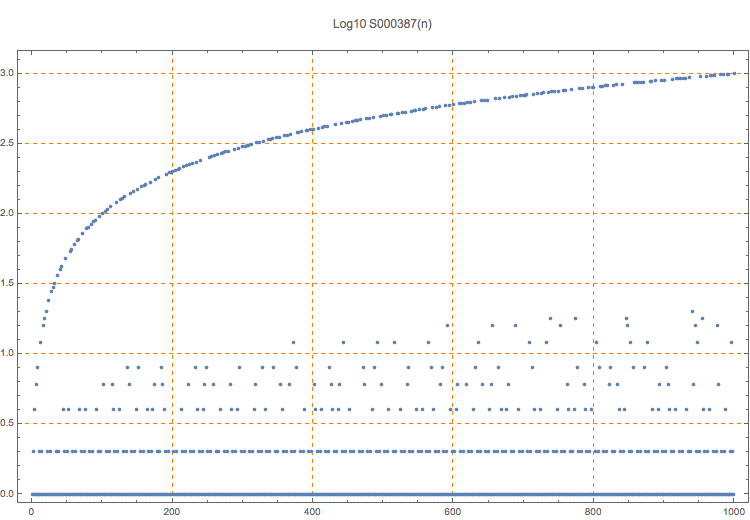The practical part of positive integer n.
1, 2, 1, 4, 1, 6, 1, 8, 1, 2, 1, 12, 1, 2, 1, 16, 1, 18, 1, 20, 1, 2, 1, 24, 1, 2, 1, 28, 1, 30, 1, 32, 1, 2, 1, 36, 1, 2, 1, 40, 1, 42, 1, 4, 1, 2, 1, 48, 1, 2, 1, 4, 1, 54, 1, 56, 1, 2, 1, 60, 1, 2, 1, 64, 1, 66, 1, 4, 1, 2, 1, 72, 1, 2, 1, 4, 1, 78, 1, 80, 1
1
The practical part of n is the largest divisor of n that is a practical number. For all odd n > 1, a(n) = 1. The sequence was plotted logarithmically to show the small a(n) at non-practical numbers n.
T. D. Noe, Plot of 1000 terms
T. D. Noe, Table of 1000 terms
Andreas Weingartner, Integers with large practical component, arXiv 1411.6974 (Nov 25 2014)
Eric W. Weisstein, MathWorld: Practical Number
(Mma) nn = 100; lst = {}; Do[d = Divisors[n]; s = Flatten[Position[Rest[CoefficientList[Series[Product[1 + x^d[[i]], {i, Length[d]}], {x, 0, n}], x]], 0]]; If[s == {}, AppendTo[lst, n]], {n, nn}]; Table[Intersection[lst, Divisors[n]][[-1]], {n, nn}]
Cf. A005153 (practical numbers).
nonn
T. D. Noe, Nov 26 2014
